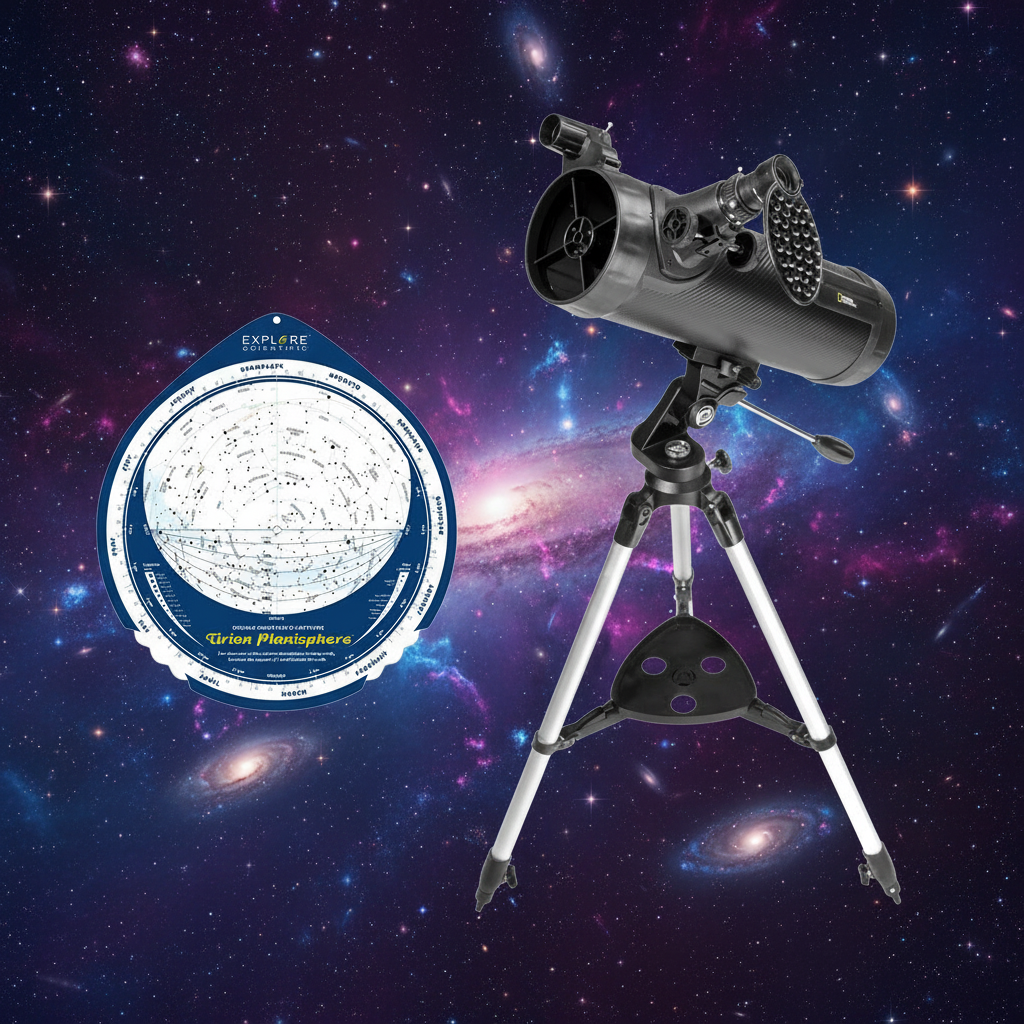At any moment of the day, countless awe-inspiring celestial events are unfolding in the sky. With a universe of options, it can be hard to pin down what to observe, what to look into or what to remember. Each week, this column will take a peek at what’s happening in the sky and in the world of astronomy in general to provide a quick list of highlights that can jumpstart your own explorations.
September 28th – October 4th
What to observe:
Aquarius Constellation
Known as the “Water Bearer,” the Aquarius Constellation is perfectly positioned this time of year to pour out its versatile celestial offerings for eager stargazers. Visible from 65° North to 90° South, Aquarius encompasses 980 square degrees and is the 10th largest of the 88 modern constellations. As one of the oldest recognized constellations, Aquarius has a rich mythological foundation that is perhaps best represented in its popular asterism known as “The Water Jar.” Formed by four stars — Gamma Aquarii, Eta Aquarii, Zeta Aquarii and Pi Aquarii — this Y-shaped arrangement is said to represent a tipped water jar from which a stream of more than 20 naked-eye stars appears to flow. The stellar river ends at Fomalhaut, which is the brightest star in the Southern Hemisphere’s Piscis Austrinus constellation. The center member of the Water Jar is Zeta Aquarii, a resolvable binary system with a yellow-white F-type dwarf and a yellow-white F-type subgiant. Aquarius has a number of other notable stars outside of those that define the Water Jar. In fact, its most famous star is Beta Aquarii, which is a multi-star system that includes a rare class of yellow supergiant. Known as Sadalsuud, this star is the brightest in the constellation and has an apparent magnitude of 2.9. To take the top spot, Sadalsuud had to narrowly edge out fellow yellow supergiant Alpha Aquarii, which has an apparent magnitude of 2.95. The third brightest star is Delta Aquarii, which has an apparent magnitude of 3.269. Also called Skat, this star is likely part of the Ursa Major Moving Group, which is defined as “an association of stars with common velocities and origin.” Other stars to visit both in and out of the Water Jar include R Aquarii, a red-hued multi-star system with a variable red giant and a white dwarf; Eta Aquarii, a binary system with stars that are nearly equal in brightness; Gamma Aquarii, a spectroscopic binary with an apparent magnitude of 3.84; Lambda Aquarii, an irregular variable with an apparent magnitude of 3.73; and Epsilon Aquarii, a white subgiant that may be a variable.
Aquarius also features several nice options for deep sky observers. Messier 2 is a bright globular cluster that can be found 5 degrees north of Beta Aquarii. Made up of about 150,000 stars, M2 is one of the largest of its kind and can be seen by the unaided eye with dark sky conditions. If you are looking for something a little less showy, Messier 72 is a more subdued globular cluster with an apparent magnitude of 9.3. The challenging cluster appears as a hazy area in moderate telescopes. However, a very large telescope will allow you to resolve some of its population of stars, which does include many blue giants and variables. Aquarius is also home to the popular Saturn Nebula, which is one of the brightest planetary nebula. When viewed through a larger telescope at a high power, this beautiful nebula shows a resemblance to the Ringed Planet that it is named after. Smaller telescopes will render the nebula as a misty disk with a nice green hue. Another Aquarius favorite is the sizable Helix Nebula, which was the first of its kind to reveal “knots of nebulosity.” Because it is the closest planetary nebula to Earth, the Helix Nebula appears about half the diameter of the Moon and is best viewed at minimal magnification to maximize the field. In long exposure photographs, the Helix will reveal a mesmerizing eye shape.
In addition to being home to all of these treats, Aquarius serves as the radiant point for several annual meteor showers that are sprinkled throughout the year. These include the Iota Aquarids, Delta Aquarids and Eta Aquarids.
What to look into:
October 4 – Astronomy Day
Promoted and organized by the Astronomical League, National Astronomy Day is scheduled for October 4th, and events are being planned around the country to celebrate. Boasting roots that go back to 1973, Astronomy Day has been held in the spring and fall each year since 2007. With a theme of “Bringing Astronomy to the People,” organizers describe the day as a grass roots movement with a mission to expose as many people as possible to the wonders of astronomy. Astronomy clubs, observatories, planetariums, schools and more will mark the day by holding a variety of events. For more information or to view a list of scheduled events, visit www.astroleague.org/al/astroday/astroday.html or check with your local astronomy club.
October 4-10 – World Space Week
Designed to inspire and enlighten, World Space Week is a global celebration of space, science and technology coordinated by the United Nations with the aid of the World Space Week Association. The theme for this year’s event is “Space: Guiding Your Way,” and event organizers will be encouraged to address the ways in which satellite navigation is used to benefit humanity. Launched by a declaration of the U.N. General Assembly in 1999, World Space Week begins every year on October 4th to recognize the anniversary of the 1957 launch of Sputnik 1, the first man-made Earth satellite. It wraps up on October 10th in commemoration of the signing of a 1967 treaty that provided the basic framework of international space law. For information on the events scheduled throughout the world to celebrate the week, visit www.worldspaceweek.org.
Coming up:
October 8 – Total Lunar Eclipse












Leave a comment
This site is protected by hCaptcha and the hCaptcha Privacy Policy and Terms of Service apply.